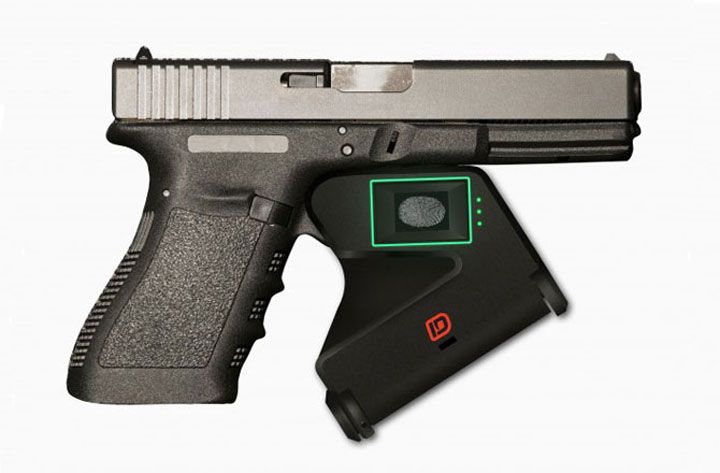
Gun violence remains one of the most controversial issues in the United States today. In fact, few issues have managed to spur the same amount of anger, fear, vociferous debate, and cynicism on all sides of the political aisle. And whereas the recent surge in mass shootings have led many to insist that change is needed where gun laws are concerned, gun-rights activists remain stalwart in their belief that free access continue to take precedence.
Given the deadlock and heat surrounding this debate, it is little wonder why many people feel that legislative reform will not solve the problem. It is also why a group of Silicon Valley entrepreneurs led by Ron Conway (an angel investor whose portfolio includes such tech giants as Google, Facebook, Twitter and Zappos) came together in 2013 to create the Smart Tech Challenges Foundation.
Inspired by the X Prize, this foundation was created to launch a series of incentive-based competitions designed to entice inventors and innovators to develop smart gun technology. The first Smart Tech Gun Challenge was launched in January of 2014, and together with serial entrepreneurs Jim Pitkow and Don Kendall, and a series of Silicon Valley entrepreneurs, the Foundation is offering four cash prizes of up to $1 million each for inventors who can come up with new and creative ideas.
These include, but are not limited to, user-authentication features for firearms such as biometric sensors, smartwatches and other paired devices that identify the gun's registered user. Ultimately, the goal is to ensure that such terrible tragedies as the Sandy Hook Elementary School shooting, plus countless firearm-related deaths that happen within the home, can be prevented.
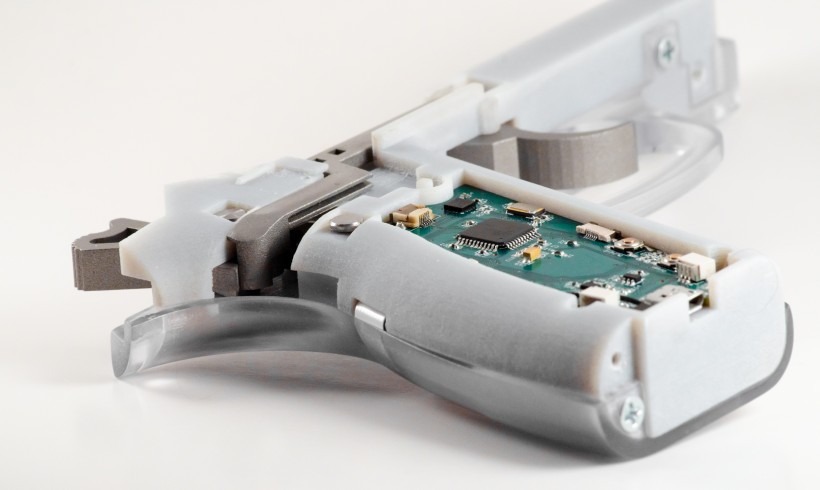
As they state on their website: “Every day in America 87 people are victims of accidents, homicides, and suicides with guns. 8 children and teens die from guns. 179 people are injured by guns.” Hence why the first category of the competition, Smart Tech For Firearms, is centered on technology that reliably authorizes approved use.
According to a report from the Bureau of Justice Statistics, roughly 1.4 million firearms were stolen during burglaries between 2005 and 2010. These guns were then used to commit violent crimes, ranging from armed robbery and breaking and entering to assault with a deadly weapon. Therefore, preventing guns from falling into the wrong hands, or making them worthless if they do, is an integral part of the foundation's vision.
The other three categories include: Smart Tech for Big Data, which looks to develop ways to optimize law enforcement patrol routes and gunshot detection using big data and predictive analytics; Smart Tech for Brain Health, which looks to promote innovation "in the fields of mental health, neurology and optimized intervention" and; Smart Tech for Community Safety, which is focused on crisis response and crowd-based alert networks for safer schools and communities.
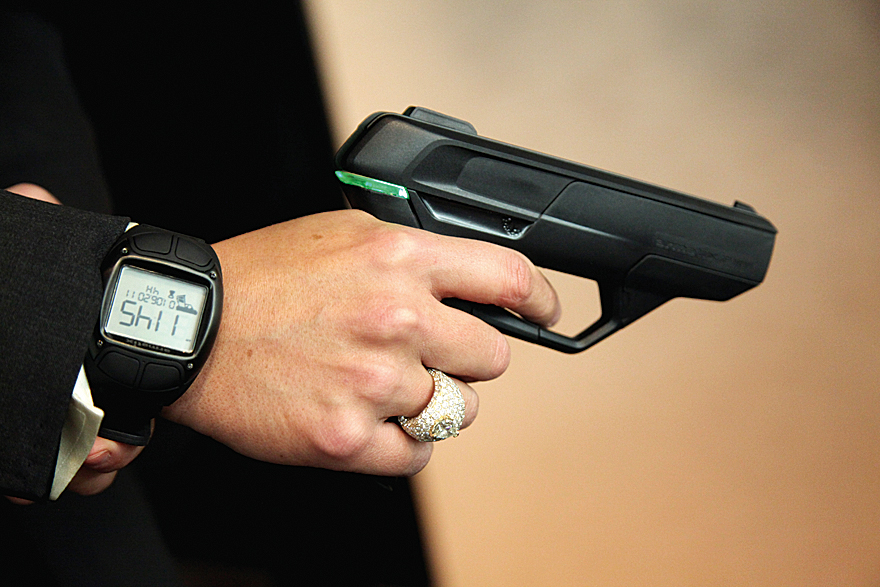
This multi-tiered approach therefore aims not only to make it harder for people to use guns they don't own, but to address many of the related and underlying issues. These include mental illness, crime prediction, law enforcement, and alternatives to simply having more guns where fear of gun violence is high.
When it first opened in January of 2014, the Foundation recieved hundreds of submissions. Since that time, 15 innovator teams have been selected and grants have been made. These include $10,000 awards for "early innovators" to begin research and development, $50,000 for "developing innovators" to apply their user-authentication concepts to firearms, and $100,000 awards for "experienced innovators" to refine their prototypes on a firearm.
One competitor who has gained quite a bit of attention is Kai Kloepfer, a high-school student from Boulder Colorado who recieved a $50,000 award to develop his biometric fingerprint scanner. The young engineer began working on his technology back in 2012 after the tragic shooting that took place in the movie theatre in Aurora, Colorado, which was just an hour's drive away from his house.
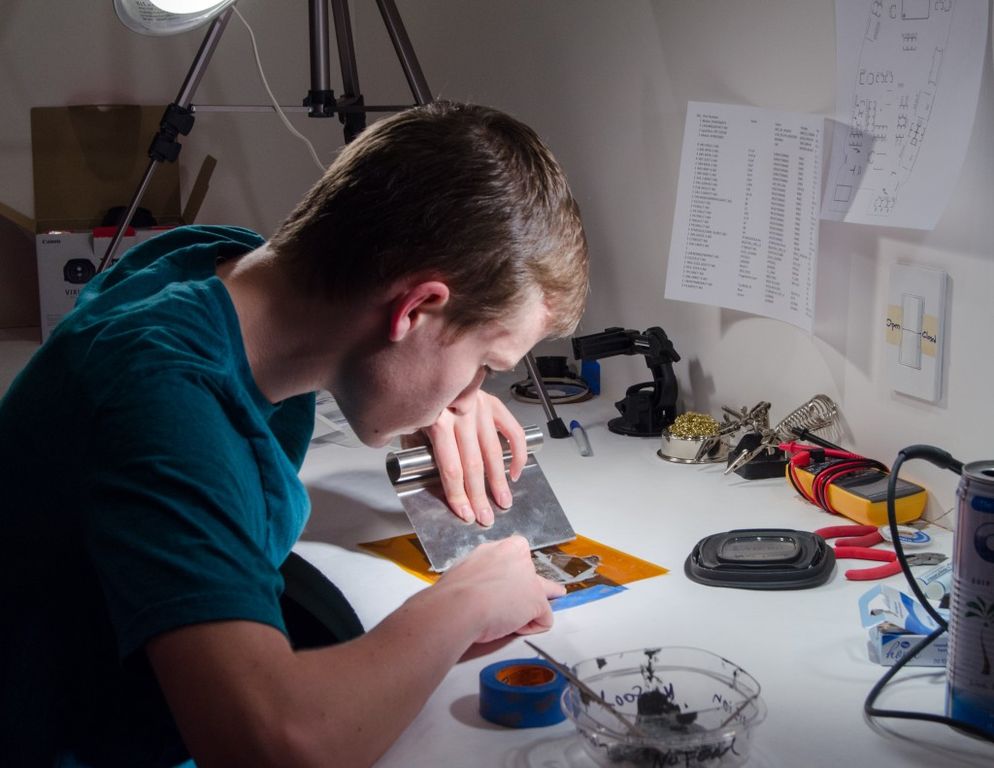
A previous prototype of the sensor won him the Grand Award at the 2013 Intel International Science and Engineering Fair, and was the top engineering project submitted by an American student, placing him among the top 34 innovators out of 7 million students who entered the Fair. He also went on to speak at TEDx Mile High: CONVERGENCE in Denver, Colorado last September, where he discussed his innovative approach to firearms safety.
Being part of a generation that grew up with digital technology and is now at the forefront of next-generation developments in biometric IDs and sensors, Kloepfer feels he and others like him are well-suited to the challenge of using these technologies to address the issue of gun violence.
"It’s going to be my generation – the ones who have grown up with digital technology and electronic integration – that will lead the way in the development and adoption of smart gun technology,” he said. “This type of technology has previously only existed in science fiction movies. But young people are open to exploring our options as consumers and as innovators. I have real hope that we can apply biometric technology to firearms in order to reduce accidental deaths and injuries, and to prevent tragedies.”
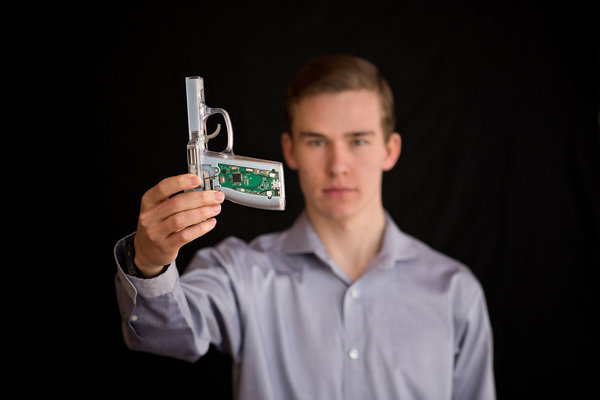
Kloepfer is now using the grant money to refine his concept, which can be programmed for a virtually unlimited number of users, adapted to different classes of firearm, and boasts a 99.99% accurate fingerprint recognition rate - even with partial prints. He has already used a part of his Foundation grant to purchase a professional-grade 3D printer to create new parts for his prototype.
Other competitors include TriggerSmart, and Ireland-based company that uses RFID chips as an alternative to biometric sensors, which they feel are slow and unreliable. Meanwhile, companies like Armatrix have released their iP1 pistol - the smartgun featured in the latest Bond movie Skyfall - which uses a paired watch with an RFID chip to identify the user.
Also, the iGun Technology Corporation is developing a smart shotgun, one which uses uses magnetic spectrum tag technology to ensure fire safety. Similar in function to an RFID chip, the technology is embedded in a ring which the user must be wearing if they want to fire the gun. Between these and the STCFs incentive-based solution, smart guns are slowly making their way to the market.
Naturally, there is still a long way to go before they are in wide usage and opposition remains high amongst gun-rights advocates. What's more, there's no telling just how effective they will be when it comes to curbing gun violence overall. However, no one can deny that a technology-driven approach that awards innovation and makes it more difficult for accidents and misuse to happen is a good start!
For more information on the Challenge, or to become involved, click here. And be sure to check out this video from the Smart Tech Challenges Foundation website:
Sources:
- smarttechfoundation.org/
- www.iguntech.com/how.html
- armatix.com/products/ip1-basic/
- tedxmilehighconvergence.com/kai-kloepfer/
- www.gizmag.com/smart-tech-challenge/30640/
- www.bjs.gov/content/pub/press/fshbopc0510pr.cfm
- www.engadget.com/2014/05/12/smart-gun-explainer/
- www.intel.com/content/www/us/en/education/competitions/international-science-and-engineering-fair.html
- www.nytimes.com/2015/01/18/opinion/sunday/nicholas-kristof-smart-guns-save-lives-so-where-are-they.html
- www.theverge.com/2014/9/11/6136219/the-first-winner-in-the-1-million-smart-gun-tech-challenge
- www.fastcompany.com/3021232/silicon-valley-trio-launches-1-million-competition-for-smarter-safer-guns-exclusive
- venturebeat.com/2014/01/28/can-tech-innovation-curb-gun-violence-smart-tech-posing-4-million-dollar-challenges-to-find-out/
Image Credits:
- Top Image: sentinl.com
- Smart Gun: STCF
- iP1: sfexaminer.com
- Kai Kloepfer: STCF
- Kai Kloepfer + Smartgun: NYTimes
